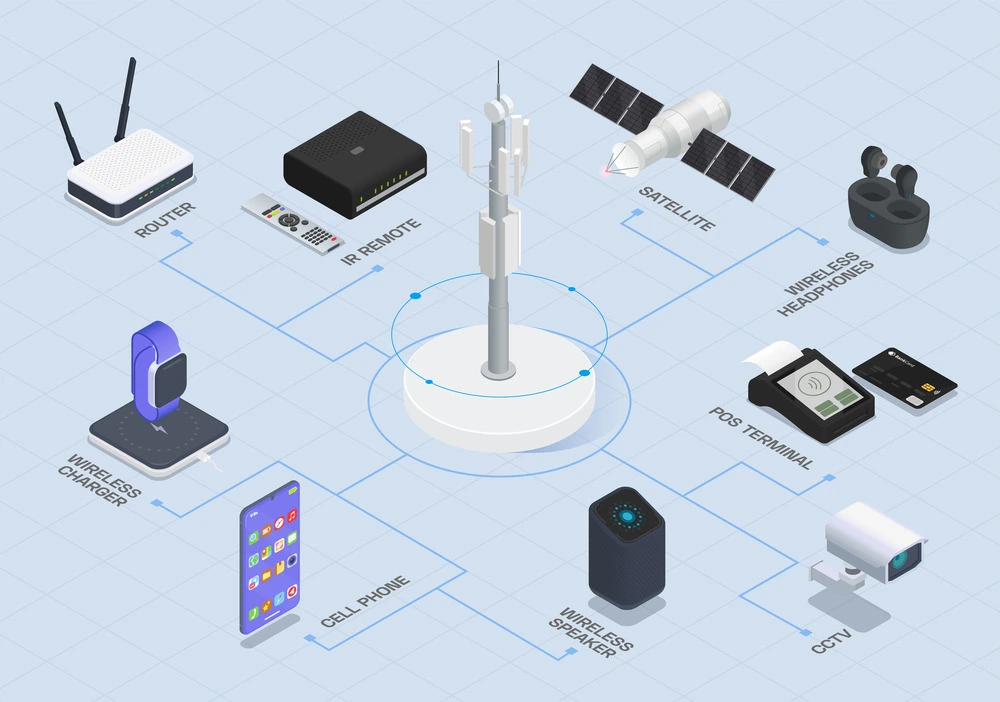Understanding IPv6 Fundamentals

With the internet expanding rapidly, the older IPv4 system just can’t keep up with the demand for new IP addresses. That’s where IPv6 comes in. If you’re wondering what IPv6 is, it’s the next-generation internet protocol designed to replace IPv4, offering a much larger pool of addresses and better efficiency. Let’s break down the essentials:
What is IPv6 and how does it differ from IPv4
IPv6 uses 128-bit addresses compared to 32-bit IPv4 addresses, meaning it can support trillions of devices. It also simplifies address management and routing.
Key IPv6 Features and Benefits
- Unlimited address space
- Built-in security with IPsec
- Better performance and mobility
- Simplified network configuration
Challenges in IPv6 Adoption

1. Compatibility with Legacy Systems: Older hardware and software often lack support for IPv6, making integration difficult and costly.
2. Training and Implementation Costs: Organizations must invest in staff training and new infrastructure, leading to higher upfront expenses.
3. Slow Migration Across Industries: Many industries continue to rely on IPv4 due to a lack of urgency or awareness, slowing down widespread adoption.
The Role of IP Address Management (IPAM)
Managing IP addresses in a growing network can be messy and time-consuming. That’s where IP Address Management (IPAM) steps in to keep everything organized, efficient, and secure.
What Is IPAM?
IPAM is a system or tool for planning, tracking, and managing IP addresses in a network.
- It keeps a record of which devices are using which IPS.
- It prevents duplicate IPS and IP conflicts.
- It helps with DNS and DHCP integration for smoother network management.
In simple terms, IPAM gives you visibility and control over your entire IP address space.
Related Blog: What is IPAM? How IP Address Management Works
Traditional IPAM vs. Smart, Integrated IPAM
| Traditional IPAM | Smart, Integrated IPAM |
| Manual processes (e.g., spreadsheets) | Automated IP tracking and management |
| High risk of errors and duplicates | Minimizes errors with real-time updates |
| Difficult to scale with network growth | Easily scales with growing networks |
| Limited or no DNS/DHCP integration | Seamless integration with DNS and DHCP |
| Reactive troubleshooting | Proactive alerts and reporting |
| Time-consuming for IT teams | Saves time with centralized control |
Core Capabilities of Modern IPAM Solutions

- Automated IP Tracking: Automatically monitors and assigns IP addresses.
- Real-Time Visibility: Gives a live view of your entire network’s IP usage.
- Integration with DNS/DHCP: Keeps address info accurate and up-to-date.
- Reporting and Alerts: Helps spot issues quickly with smart alerts and logs.
- Security and Compliance: Tracks changes and access to stay secure and audit-ready.
With modern IPAM, managing your network becomes smoother, faster, and a lot less stressful.
Why Smart, Integrated IPAM Is Critical for IPv6
As organizations prepare to shift to IPv6, network address management becomes more complex. Traditional tools just can’t handle the scale and structure of IPv6 networks. That’s why smart, integrated IPAM solutions are now more important than ever — they help manage vast address spaces, simplify IPv6 transition strategies, and keep your network secure and efficient.
Handling Vast IPv6 Address Spaces
One of the biggest changes with IPv6 is the massive increase in available IP addresses. Unlike IPv4, which has about 4.3 billion addresses, IPv6 offers trillions of IP addresses — enough for every device on the planet and beyond.
- Manually managing such a large pool is impossible.
- Smart IPAM tools organize and track IPv6 addresses automatically.
- They help you break large blocks into logical groups for easier planning and usage.
This makes network address management far more structured and less error-prone, even as the network grows.
Ensuring Address Utilization and Avoiding Waste
With so many addresses available in IPv6, it’s easy to assign more than needed or lose track of which addresses are in use.
Smart IPAM tools help by:

- Tracking address assignments in real time.
- Identifying unused or underutilized IP ranges.
- Offering usage reports to help optimize address space.
This ensures you’re not wasting valuable IPv6 resources and helps maintain clean, efficient address management.
Simplifying Dual-Stack and Transition Strategies
During the IPv6 transition, most networks operate in dual-stack mode, running IPv4 and IPv6 together. Managing both versions at once can get messy.
Smart IPAM simplifies this by:
- Offering a unified view of both IPv4 and IPv6 addresses.
- Helping you map and plan IPv6 alongside existing IPv4 systems.
- Supporting phased rollouts as part of your IPv6 transition strategies.
This allows IT teams to smoothly shift to IPv6 without disrupting current services or facing compatibility issues.
Enhancing Network Security and Compliance
IPv6 introduces new risks if not properly managed — such as rogue devices or misconfigured address allocations.
A modern IPAM helps improve security by:
- Logging all IP activity and changes.
- Integrating with DNS and DHCP to detect unauthorized devices.
- Offering audit trails for compliance with security policies.
With smart IPAM in place, your network address management will become efficient, secure, and compliant with internal and industry standards.
Smart, integrated IPAM isn’t just a tool — it’s a must-have foundation for managing today’s complex networks and making your IPv6 transition strategy smooth, safe, and scalable.
Best Practices for Efficient IPv6 Management with IPAM

Managing IPv6 efficiently requires more than just tools — it needs a thoughtful approach. With a smart IPAM system in place, following the right practices can make your network more reliable, secure, and easier to manage.
- Establish Clear Addressing Plans and Naming Conventions
Before diving into IPv6 deployment, it’s important to have a clear and organized addressing plan. With the vast space IPv6 offers, structure matters more than ever. Plan how addresses will be assigned based on location, department, or device type. Also, stick to consistent naming conventions across your network, so that identifying and managing devices becomes easy. A well-documented plan ensures everyone in your team follows the same path and helps avoid confusion as your network grows.
- Leverage Automation for Provisioning and Discovery
Manual IP tracking doesn’t work well with the scale of IPv6. Automation is a must for accurate and efficient management. Smart IPAM tools can automatically assign addresses, detect new devices, and handle real-time address changes. This reduces human errors and saves your team from the stress of constantly updating spreadsheets or chasing down misconfigured devices. Automation ensures your IP data stays fresh and reliable.
- Integrate IPAM with DNS, DHCP, and Network Monitoring
IPAM becomes much more powerful when connected to the rest of your network infrastructure. Integrating it with your DNS and DHCP systems allows for centralized, synchronized control over address assignments and hostname records. Linking it to your network monitoring tools provides real-time visibility into what’s happening across your network. This makes it easier to identify issues, track changes, and keep everything running smoothly.
- Implement Role-Based Access Control and Audit Logging
Not every user needs full access to your IPAM system, especially when dealing with critical network configurations. Role-based access control lets you assign specific permissions to users based on their roles, which keeps your system secure and organized. Alongside that, audit logging ensures every change or access attempt is recorded. This adds a layer of accountability, helping you trace back actions if something goes wrong and supporting compliance with internal or industry standards.
- Regularly Review and Optimize Address Utilization
Even though IPv6 offers a vast address space, it’s still important to manage it efficiently. Regularly reviewing your IP address usage helps you identify which addresses are active, which are idle, and which could be reassigned. Cleaning up unused blocks and fine-tuning your allocations prevents waste and keeps your network neat and efficient. It’s a good habit that ensures your infrastructure is always ready for expansion and change.
By adopting these best practices and using a smart IPAM system, you’ll be able to handle IPv6 with confidence. It keeps your network organized, reduces risks, and makes daily operations much easier to manage.
Choosing the Right Smart, Integrated IPAM Solution
Managing a network is no longer just about IP addresses—it’s about doing it smartly and securely. A modern IPAM solution like Infraon IPAM helps you manage IPv4 and IPv6 with automation, visibility, and control. It’s the key to smooth and efficient network address management.
- Define Your Needs: Start by understanding your network size, future growth, and compliance needs. Make sure the IPAM tool supports both IPv4 and IPv6, considering the benefits of IPv6, like a larger address space and better routing. Also, consider integration with other tools and your available budget.
- Evaluate IPAM Functionality: Look for a solution that tracks IP addresses automatically and manages DNS and DHCP in one place. It should send alerts about IP conflicts, wrong entries, or full subnets. Support for static IPs, APIs, and automation will help you scale faster and with fewer errors.
- Consider Specific Features: Different tools offer different strengths. OpUtils helps detect DNS issues, while Infoblox adds cloud and security layers. AWS and Azure IPAM tools support virtual networks and auto-assign CIDRs, which is vital if you’re in the cloud. Choose a solution that fits your infrastructure and setup.
- Evaluate and Select: Compare tools by features, support, price, and user experience. Read real user reviews to learn how well they work in real-world networks. Request a demo or free trial so you can test the IPAM solution before rolling it out in your live environment.
Infraon IPAM brings all this together with a smart, integrated platform that simplifies IPv6 transition, improves visibility, and reduces risks in your network.

Conclusion
A smart, integrated IPAM (IP Address Management) solution simplifies tracking, assigning, and monitoring IPv4 and IPv6 addresses. From automating IP discovery to preventing conflicts, ensuring compliance, and integrating smoothly with DNS and DHCP, a capable IPAM system keeps your network running smoothly.
Infraon IPAM offers everything you need in one unified platform—real-time tracking, powerful reporting, automation, and seamless support for IPv6 transition strategies. Whether you’re a growing enterprise or a large-scale infrastructure provider, Infraon gives you full control over your network address management while preparing you for the future with IPv6.
To manage the shift to IPv6 effectively, you don’t just need more tools—you need the right ones. And Infraon IPAM delivers exactly that. Learn more at infraon.io.



















